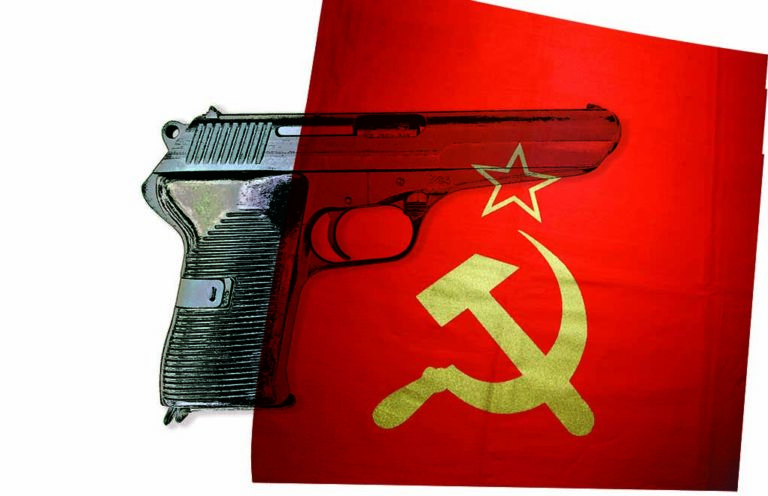
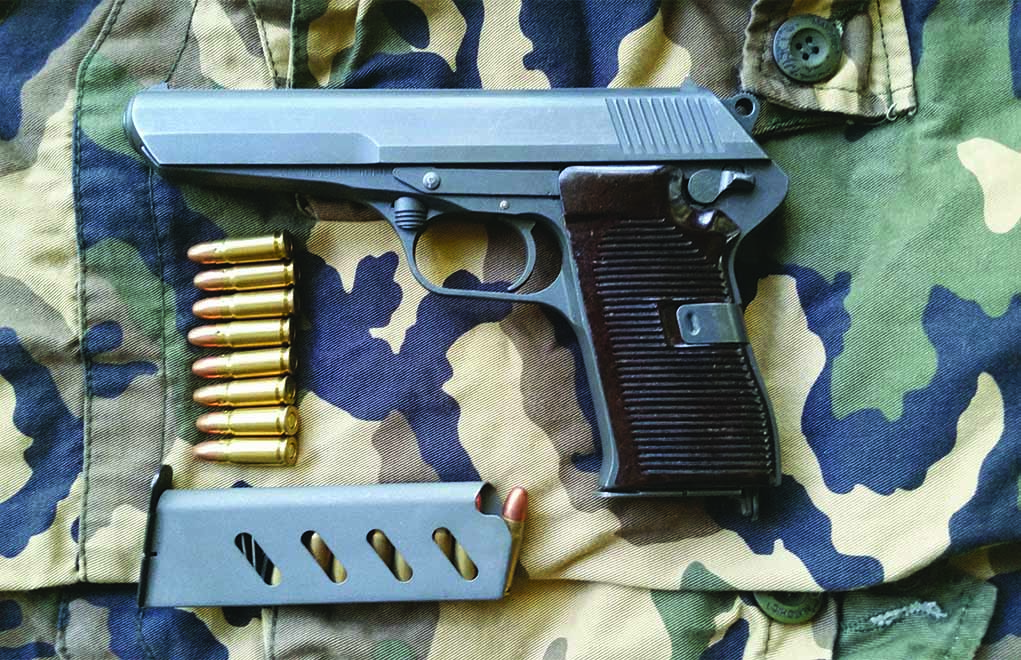
Among the best known Combloc pistols, true-to-life Russian Tokarev pistol specimens are few and far between stateside. But its clones abound.
Ironically, Russia never released the surplus Tokarev TT-33 semiautomatic pistols after the fall of communism. Chambered for the powerful, high-velocity bottlenecked 7.62x25mm cartridge, the Tokarev was well known, but not readily available in the West for over five decades. In reality, it used a round that was an almost identical, but hopped-up version of the old 7.63mm Mauser “Broomhandle” cartridge. Adopted by the USSR in 1933, those very few that have come into the United States were either wartime bring-backs, including a limited quantity of imports from the Ukraine. In years gone by, Service Armament (later Navy Arms Company) offered a handful in the 1960s, all of which were Spanish military surplus and were leftover Soviet “gifts” from the Spanish Civil War in 1936, however, most of those ‘60s imports came from Finland.
Manufactured at the Tula Arsenal, this eight-shot, short-recoil-operated semiautomatic pistol that takes much of its mechanics from both John Browning’s Colt Model 1903 and Model 1911, is probably one of the most widespread military handguns used throughout the world. Furthermore, it was licensed by the Soviet Union to at least three European countries behind the Iron Curtain, as we shall later see. Currently, aside from those 1990s arrivals from the Ukraine, the author has yet to observe any Russian-made Tokarev TT-33 in this country that came to our shore directly from its Motherland. Thus, the specimens most commonly available in this country are once again, more often than not, bring-backs from the Vietnam War, Korea or other former combat zones. For that short period of time in the mid- to late-1990s, the limited numbers of Russian-made TT-33 pistols imported by Century International from the Ukraine were equipped with a mandatory aftermarket manual trigger safety required by federal law. This unwanted addition was demanded by the BATFE on all pistols of Tokarev design. Nevertheless, though former Ukraine state property, all are marked “Russia” along with the importer’s address.
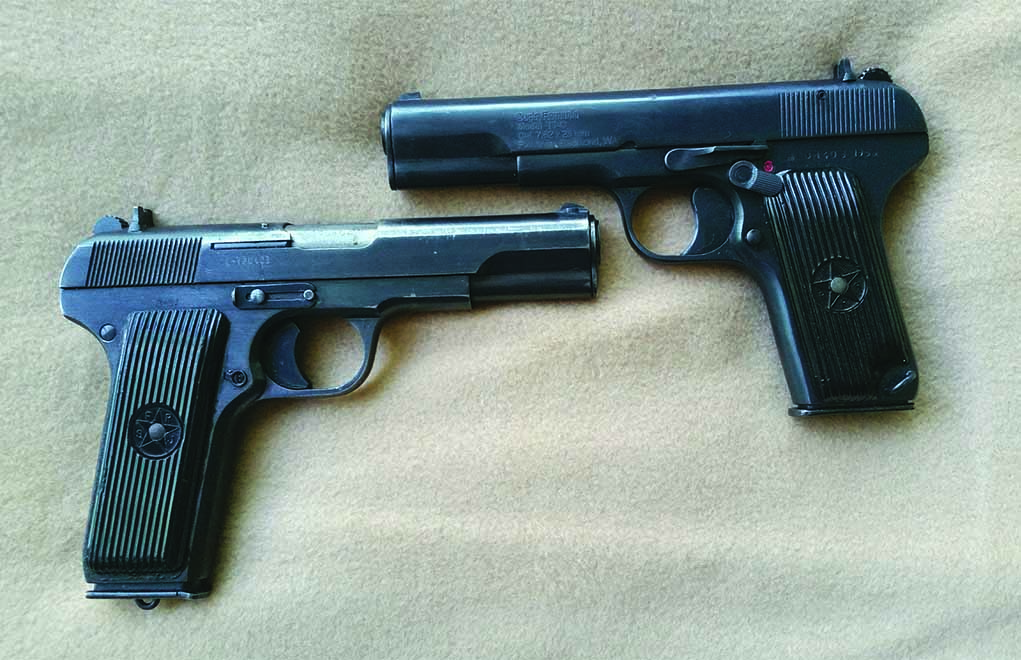
In the beginning, it appears that one of the earliest semiautomatic pistols in 7.62mm Tokarev caliber introduced to U.S. shores was the indigenously designed Czechoslovakian CZ-52. Between 1993 and 1996, Century Arms International was among the first to offer the CZ 52 on the American surplus market. Its arrival was certainly a welcome one as practically no American shooters or collectors had ever had the opportunity to examine, let alone own, one of these unique semiautomatic pistols. From 1952 to 1954, the Czech government manufactured a total of 200,000 CZ 52 pistols, which bear no resemblance to the Tokarev physically, nor internally, whatsoever. Its original Czech nomenclature was the Vzor or VZ 52 (Vzor translated to “Model” in Czech) is more commonly known to Americans with the prefix “CZ”, and was the brainchild of engineers, Jaroslav Kratochvil and Frantisek Myska who were fairly prominent in Czech ordnance circles.
Da … We Have More Combloc Guns:
- Is A Mosin-Nagant Still Worth The Money?
- The AK-47: Rifle for the Motherland
- SKS Collecting: The Last Hold Out?
- The Makarov And Other 9x18mm Pistols
- The Peculiar Pioneer Arms PM-63C Pistol
- Nagant Revolver: Unique Relic From Behind The Iron Curtain
The entire mechanical concept of their design was unlike any other semiautomatic military pistol manufactured to date. The action of this unique eight-shot, single-action pistol utilizes a roller-locked, short-recoil system equipped with a cam block that is quite efficient at allowing the use of both standard velocity or high-pressure submachine gun ammunition. Similar to that of the German MG 42 machine gun, the CZ 52’s beefy lock-up system has never been applied to another semiautomatic pistol. Czech military’s reasoning behind this was to allow the use of one cartridge for both pistol and submachine gun, a logistically clever move precluding the requirement to maintain and identify two varieties of cartridges for two different firearms. Design-wise, no screws are used in its construction and its multiposition, manually operated safety system allows it to be de-cocked and locked with a round in the chamber as the firing pin has a sear block system allowing safe carry. The red-lined Bakelite grips are retained by a “U” clip and unless reworked, most pistols have a phosphate-like finish similar to Parkerization. The CZ 52 remained in uninterrupted service until it was replaced in 1982 by the CZ 82 in 9mm Makarov caliber.
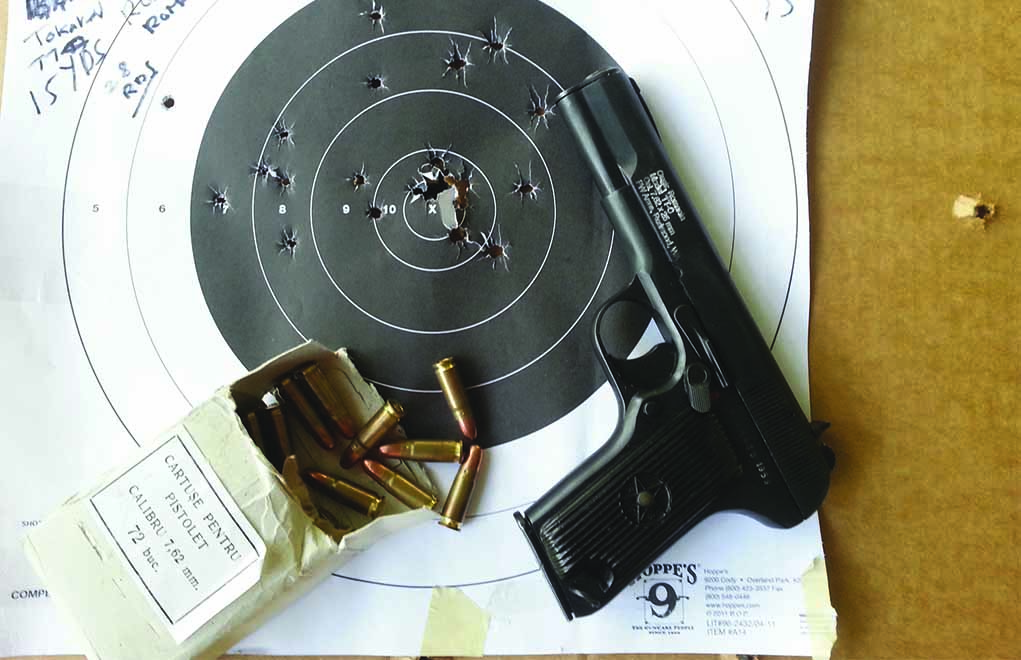
A word of caution on the CZ 52 drop safety is that many of these are well known for worn safety disconnectors, and may inadvertently fire when using the de-cock feature on a loaded chamber if such parts are not replaced. The best advice is not to use the de-cock feature at all on a loaded CZ 52 chamber. Replacement parts for the CZ 52 may be found at harringtonproducts.com.
Three post-World War II Soviet satellites opted to build copies of the Russian TT-33 Tokarev in their own factories, and examples of these were seen for the first time in the 1990s when these countries began selling off their Soviet-era hardware. Among the first licensees to manufacture a clone of the Russian Tokarev service pistol was Poland. Since 1922, Poland’s Fabrika Broni, located in Radom and known also as Lucznik Arms Factory Number 11, had a reputation for producing high-quality military arms, and were temporarily taken by Germany during the Nazi occupation. FB continued to remain active following the end of World War II when Soviet domination dictated Poland’s governmental affairs. In late 1946 the Polish military adopted the Russian Tokarev as their standard military sidearm and received licensing rights to manufacture the pistol domestically. Earlier that year, tooling and gauges were shipped to Poland from Russia’s Tula Arsenal with production of the PW wz.33 copy of the Tokarev commencing soon after.
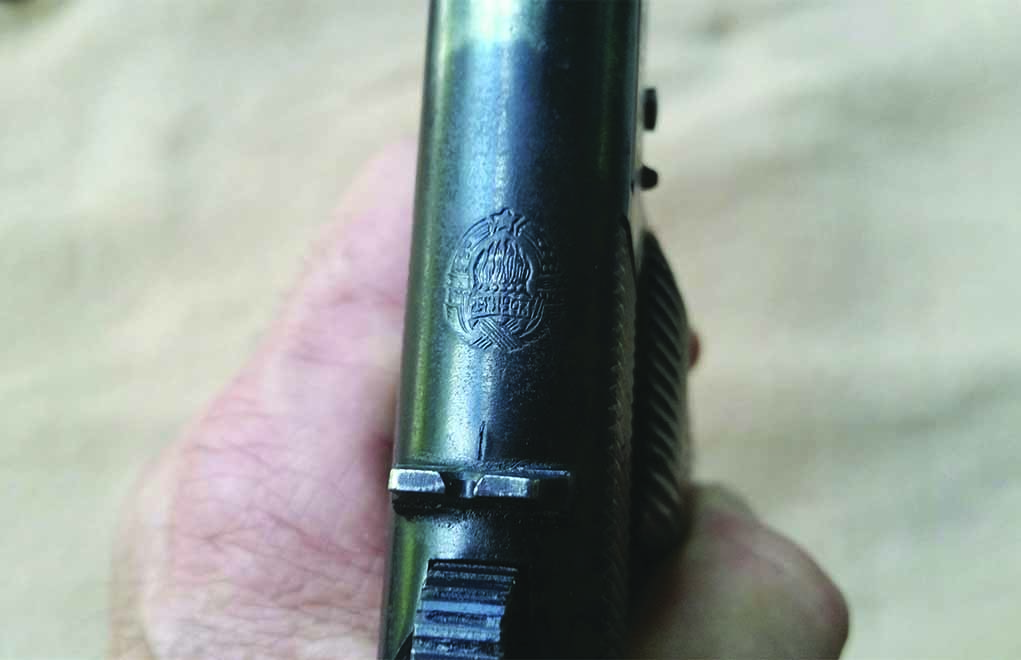
The Polish variant is practically identical to its Russian counterpart – with the physical exception of its grips. The Soviet version has a five-point star with CCCP in between the star points (USSR in the Cyrillic alphabet), whereas the hard rubber grips on the Polish copy have vertical striated lines from top to bottom minus the circle and star logo. Serial numbers are located on the left frame and upper slide along with the year of manufacture and Factory’s Circle 11 logo. In regression, as the original Tokarev’s sole safety feature is a half-cock position on the hammer, the BATFE-added trigger safety is located beneath the slide catch. The most commonly encountered type of supplementary safety found on Tokarev imports is a rotating thumb-type affair. Though noble in concept, the unsightly addition simply detracts from the Tokarev’s original cosmetics. Having long since sold out from import surplus distributors, they are regularly encountered on Internet websites.
A peculiar note is appropriate regarding the Tokarev copies. Along with the former Soviet Union, the one Eastern European nation that did not export their Tokarev copies is Hungary. Receiving their license rights to build the Tokarev at the Budapest Fegyvar factory in 1948, their variant is known as the Pistoly M48. From the end of the Cold War to the present, Hungary has not released any domestically produced Tokarev copies and the reasons are yet unknown. Hungary did export their 9mm Makarov caliber surplus handguns as shall be seen later. With very limited numbers of the M48 pistols in the United States, it should be considered the rarest of Eastern European Tokarev copies. Currently, most are found ranging in price from $1,600 to $2,500 on the surplus firearms circuit.
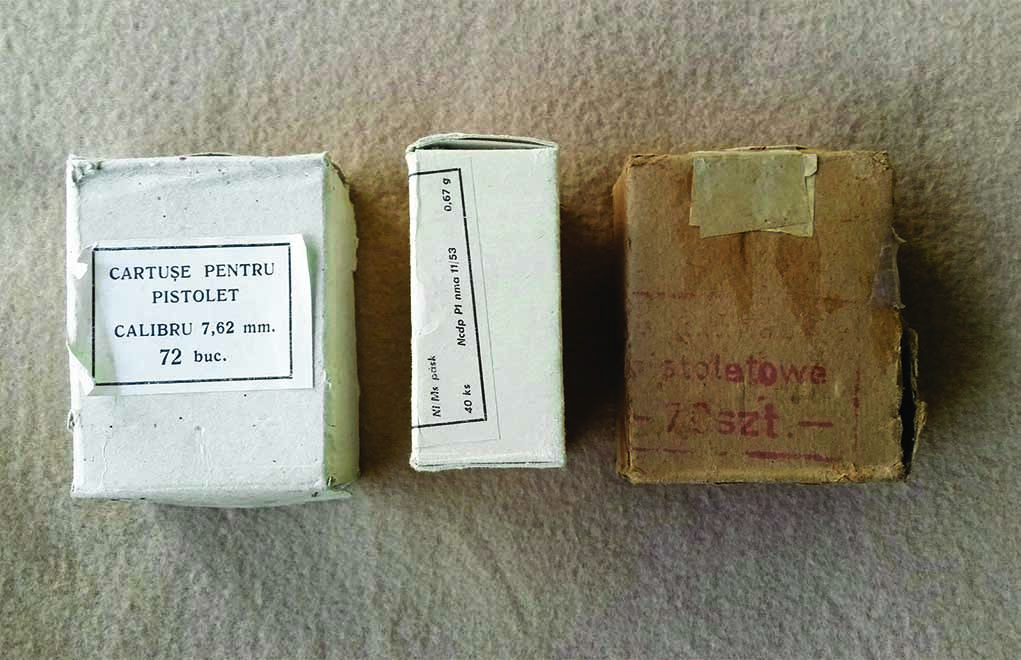
Following Poland, it appears that both Romania and Yugoslavia began exporting their surplus licensed Tokarev pistols with the former appearing about 1997 up until 2013, when supposedly the final lots were received. Romania’s licensing rights to manufacture the Tokarev began about 1952 and ceased production in 1959. Known as the TTC or Tulskiye Tokarev Cugir, they were produced at the Romanian military arms factory at Cugir and remained in regular service until the Romanian revolution of 1989. Practically identical to the Polish version, its major differences are the narrow, rear slide grip serrations, whereas the Polish copy had the spaced oval serrations, similar to those found on the original Russian TT-33. Also, the Romanian TTC has the hard rubber grips with a circled five-point star. The lettering located between the star points is “RPR,” an abbreviation for Republica Socialistica Romania. The Romanian TTC has its serial number and year of manufacture on the rear left frame with import markings and country of origin usually on the center of the left slide flat. The identical, and non-original, swiveling thumb safety is located similar to that of the Polish variant. Incidentally, some gunsmiths have removed these, filling the space with a dummy pin. However, this can be a tricky procedure and are perhaps best left alone.
Research has found that PW Arms of Washington state possibly imported the most recent, and perhaps final batches. Many of the TTC pistols included an original military-style brown flap holster and a cleaning rod, and the majority were refinished and in crisp mechanical condition. The author has fired this pistol with hundreds of rounds of fresh, but corrosive, Romanian surplus 7.62x25mm ammunition loaded with 86-grain copper jacketed bullets; and it is a superb performer at the range. At 50 yards, 3- to 4-inch groups were commonplace on a half-size silhouette target. Overall, it’s a great combination for the shooter searching for economy, satisfactory accuracy and a piece of Iron Curtain history, to boot.
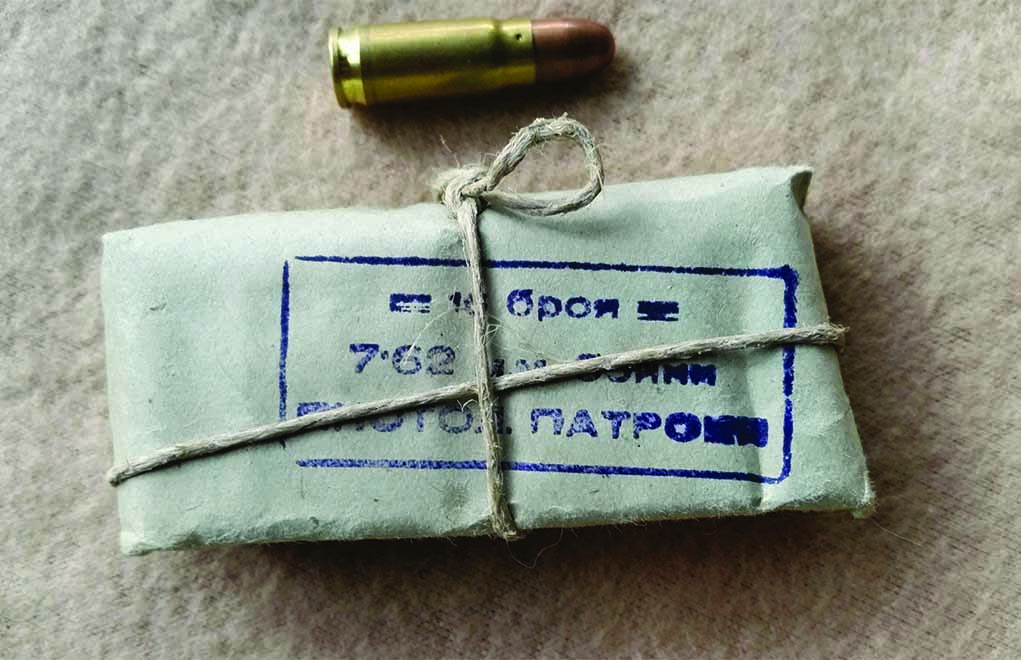
The last of the licensed Tokarev copies imported into the United States are those from the former Yugoslavia, a former communist country that broke off relations with the USSR in 1948. The Yugoslav M-57 is believed to have first appeared on the U.S. surplus market sometime around 2000 to 2004. We must remember that the Balkan wars in Bosnia and Kosovo ended just a short time earlier and most of the old Yugoslav republics hung on to much of their obsolete surplus firearms. Licensed to Yugoslavia during Premier Tito’s reign in 1957, manufacture of the M-57 was produced at the Crvena Zastava arms factory in Serbia.
There are a few twists to this particular pistol that differs from the standard Tokarev design. First off, the grip of the M-57 is some 15 millimeters longer than the standard Tokarev and was purposely lengthened to accept a nine-round magazine. The eight-round standard Tokarev magazine, however, is not interchangeable – nor vice versa. Furthermore, the M-57 has a magazine disconnector, which will not allow it to fire without a magazine inserted. In addition, the forward portion of the upper slide flat is serrated to reduce glare and it has a dovetailed front sight base to adjust windage. Also, the firing-pin retaining system differs by way of a three-piece “U” clamp assembly rather than the simple crosspin retainer of the standard Tokarev. Apparently, the engineers at Yugoslavia’s former state factory at Zastava sought to improve building a better Tokarev using reverse engineering. Perhaps the most cosmetically appealing, but non-original, feature is the sliding frame safety, which is installed along the left frame panel above the inner grip. This was by far a better approach to satisfy the BATFE demands for the added safety. For this reason the M-57 is advertised in the United States as an M-57A, the A indicating alteration for installation of the required safety. Be that as it may, the left slide flat remains stamped with M-57 as most military surplus variants were manufactured up to the late 1980s.
The author has found that the Yugoslav imports are in varying grades of condition from good to near excellent. It serves to be noted that the values of the M-57 for the collector have increased, especially those with the presence of the old Yugoslavian republic crest on the upper rear of the slide. Most of these pistols were produced before 1989, prior to separation of the six republics of Bosnia, Montenegro, Slovenia, Macedonia, Croatia and Serbia. This crest has a typical communist wreath with six flames, a star, and 25 November in Roman numerals and the year 1943. Prior to 1964, another crest with five flames was stamped in the same location and represented the five ethnic groups of Yugoslavia. Several U.S. importers have handled the M-57/57A with import marks of various countries of origin from within the former Yugoslav republics.
In addition to the availability of these pistols for the past two-plus decades, American shooters can also consider themselves quite fortunate to have been able to obtain substantial quantities of 7.62x25mm surplus ammunition. Prior to the end of the Cold War, this cartridge was practically impossible to obtain in the West, and what was available at the time was prohibitively expensive. Military surplus ammunition from Romania, Bulgaria, Yugoslavia and Poland are where the majority of 7.62x25mm fodder has originated and it is all corrosive. Quality of the ammunition varies with some showing chronic evidence of case splitting after firing, particularly in some lots of the Polish and Bulgarian varieties. Being Berdan primed, none of it was intended to be reloaded. The occurrence of minor case neck splitting after firing is not dangerous to the shooter, but can raise eyebrows. However any loaded ammunition with any such visible deficiencies should not be fired. Examine before you purchase. Perhaps the smallest quantities of imported 7.62×25 surplus ammunition is from Czechoslovakia. The majority that has been available is of the M 48 submachine gun variety, which are packed with five, eight-round stripper clips, 40 rounds to a box. As previously noted, the action of the Czech CZ 52 pistol was purposely built to be able to handle both standard and high-pressure submachine gun ammunition.
The M48 cartridge is loaded with an 85-grain steel jacketed, or copper-cased bullet, which is the average weight for most 7.62 Tokarev ammunition manufactured in former communist arsenals. The heaviest bullet weight loaded were some Russian-made varieties with a 90-grain projectile. In addition to surplus fodder, there are ample numbers of commercial ammunition makers in Europe and the United States that offer the 7.62x25mm cartridge. For those bent on reloading this number, Boxer-primed Winchester 7.62x25mm ammunition is available in their Metric Cartridge Line. Actually manufactured in the Czech Republic, nonetheless, they are of the highest quality, adhering to the typical Winchester standard. Average muzzle velocity for the 7.62 x25 mm is in the 1,230 to 1,350 feet per second range, however, the surplus Czech M 48 submachine gun cartridge attains a whopping 1,730 fps on average.
Editor's Notes: This article originally appeared in Gun Digest 2018, 72nd Edition.

Next Step: Get your FREE Printable Target Pack
Enhance your shooting precision with our 62 MOA Targets, perfect for rifles and handguns. Crafted in collaboration with Storm Tactical for accuracy and versatility.
Subscribe to the Gun Digest email newsletter and get your downloadable target pack sent straight to your inbox. Stay updated with the latest firearms info in the industry.

![Best Concealed Carry Guns In 2025 [Field Tested] Wilson Combat EDC X9S 1](https://gundigest.com/wp-content/uploads/Wilson-Combat-EDC-X9S-1-324x160.jpg)


![Best 9mm Carbine: Affordable PCCs [Tested] Ruger Carbine Shooting](https://gundigest.com/wp-content/uploads/Ruger-Carbine-Shooting-100x70.jpg)
![Best AR-15: Top Options Available Today [Field Tested] Harrington and Richardson PSA XM177E2 feature](https://gundigest.com/wp-content/uploads/Harrington-and-Richardson-PSA-XM177E2-feature-100x70.jpg)
